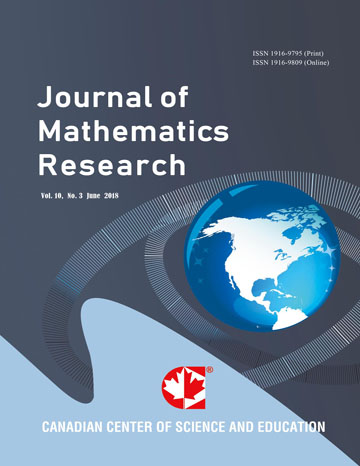Mathematical Model for the Dynamics of Neisseria Gonorrhea Disease with Natural Immunity and Treatment Effects
- Ibrahim Isa Adamu
- Sulaiman Usman
Abstract
Neisseria gonorrhea infection; a sexually transmitted disease, is caused primarily by a type of germ; a bacteria called neisseria gonorrhea. The infection is a major public health challenge today due to the high incidence of infections accompanied by a dwindling number of treatment options especially in developing and underdeveloped countries. In this paper, we developed a mathematical model for the transmission dynamics of neisseria gonorrhea infection and studied the effect of natural immunity and treatment as the only available control interventions on the spread of the disease in a population. We computed the model disease-free equilibrium and analyzed its local and global stability in a well-defined positively invariant and attracting set Ω using the next-generation matrix plus linearization method and the comparison theorem respectively. The disease-free equilibrium was proved to be both locally and globally asymptotically stable if $R_0<1$ and unstable if $R_0>1$. We conducted sensitivity analysis of parameters in the basic reproduction number $R_0$ using the normalized forward sensitivity index method. Results of the analysis revealed that $R_0$ decreases with increase in treatment and natural immunity rates. The results of the numerical simulations carried out using MATLAB R2012B showed that there is increase in new infections due to increased contact with infected individuals in the susceptible population and that, with increased treatment rate and controlled death due to the disease in the population, neisseria gonorrhea infection would be wiped out within 300 days of the treatment intervention.
- Full Text:
 PDF
PDF
- DOI:10.5539/jmr.v10n2p151
Journal Metrics
- h-index (December 2021): 22
- i10-index (December 2021): 78
- h5-index (December 2021): N/A
- h5-median (December 2021): N/A
( The data was calculated based on Google Scholar Citations. Click Here to Learn More. )
Index
- Academic Journals Database
- ACNP
- Aerospace Database
- BASE (Bielefeld Academic Search Engine)
- Civil Engineering Abstracts
- CNKI Scholar
- COPAC
- DTU Library
- EconPapers
- Elektronische Zeitschriftenbibliothek (EZB)
- EuroPub Database
- Google Scholar
- Harvard Library
- IDEAS
- Infotrieve
- JournalTOCs
- LOCKSS
- MathGuide
- MathSciNet
- MIAR
- PKP Open Archives Harvester
- Publons
- RePEc
- ResearchGate
- Scilit
- SHERPA/RoMEO
- SocioRePEc
- Standard Periodical Directory
- Technische Informationsbibliothek (TIB)
- The Keepers Registry
- UCR Library
- Universe Digital Library
- WorldCat
Contact
- Sophia WangEditorial Assistant
- jmr@ccsenet.org
